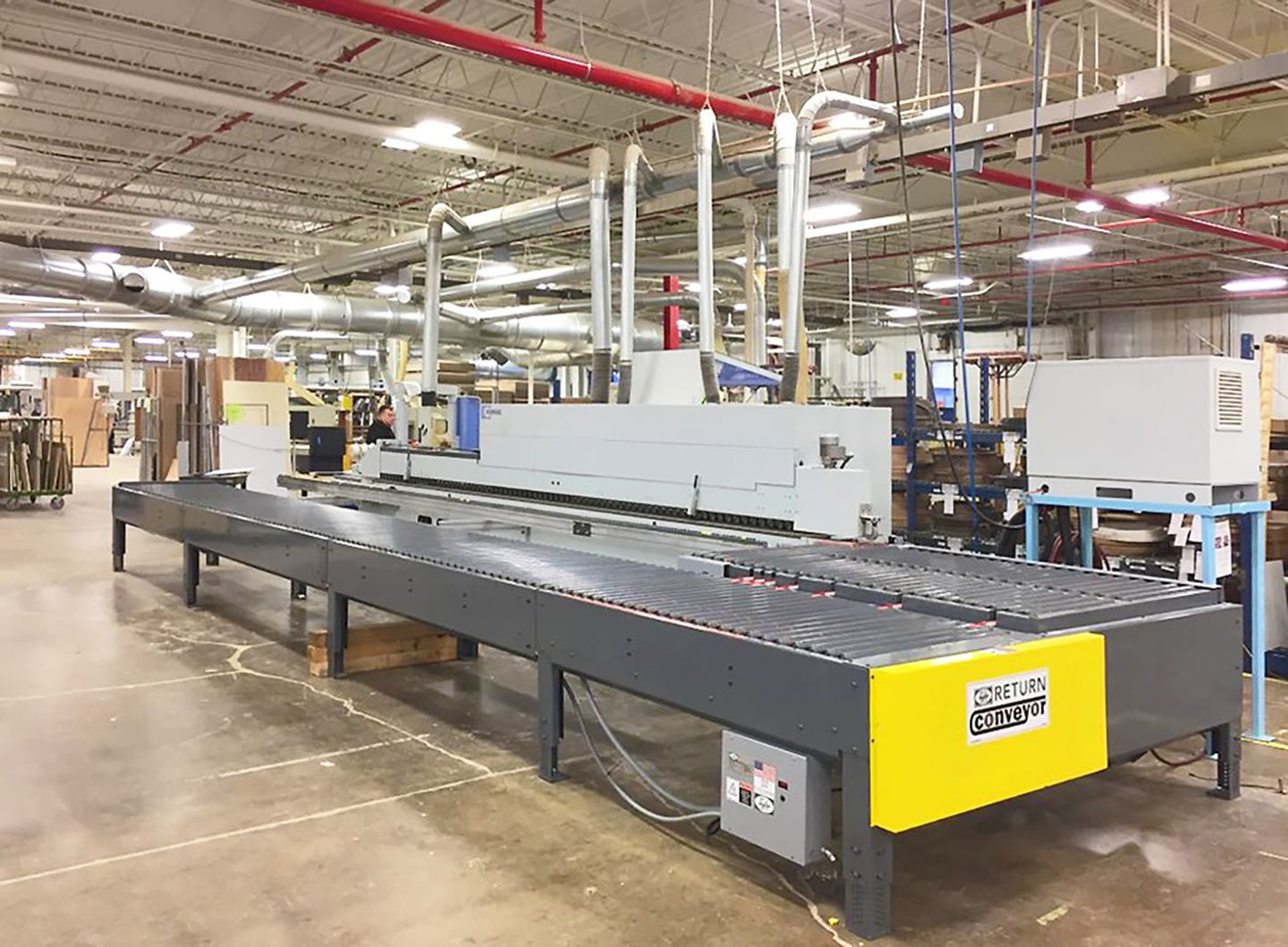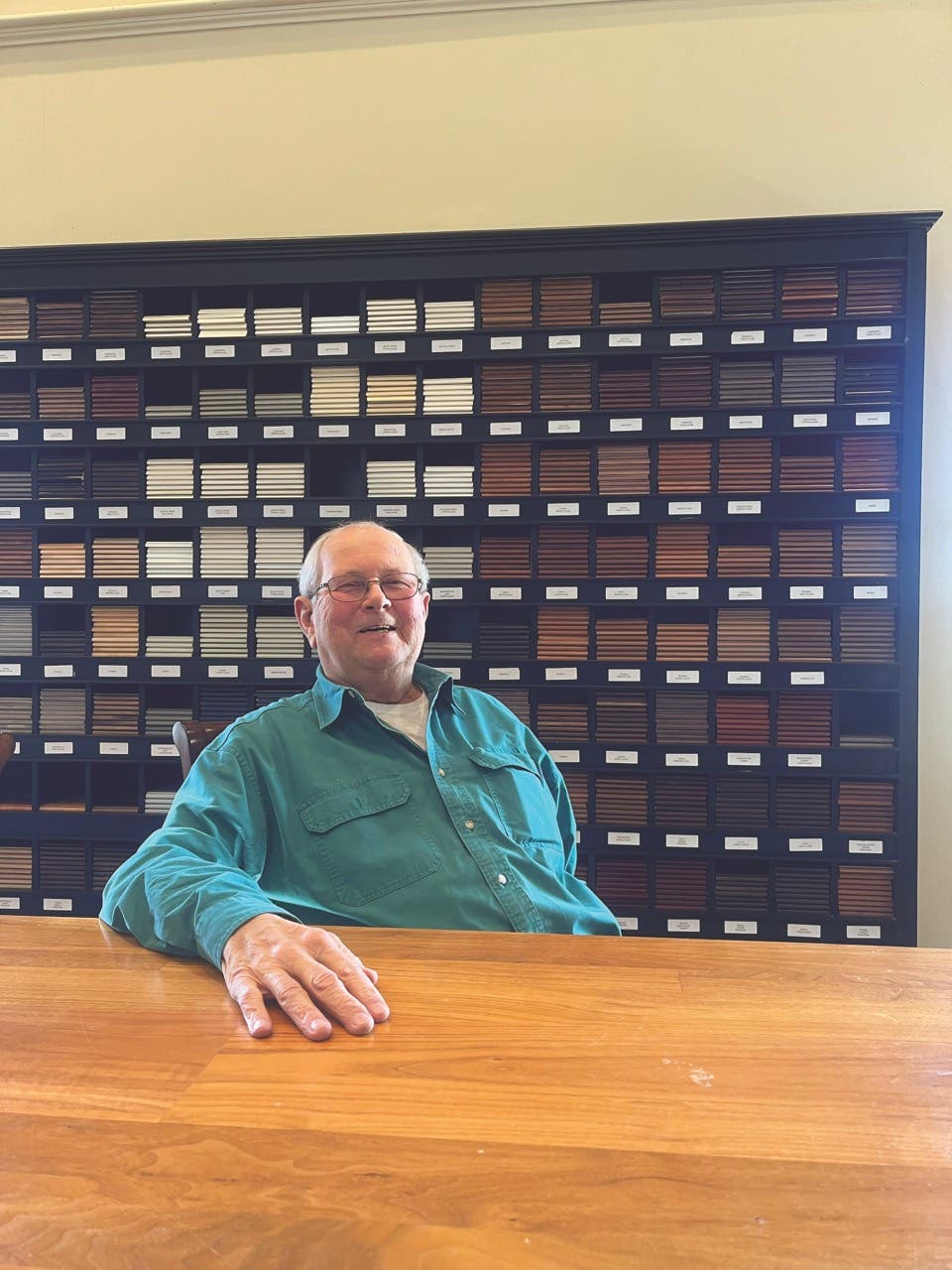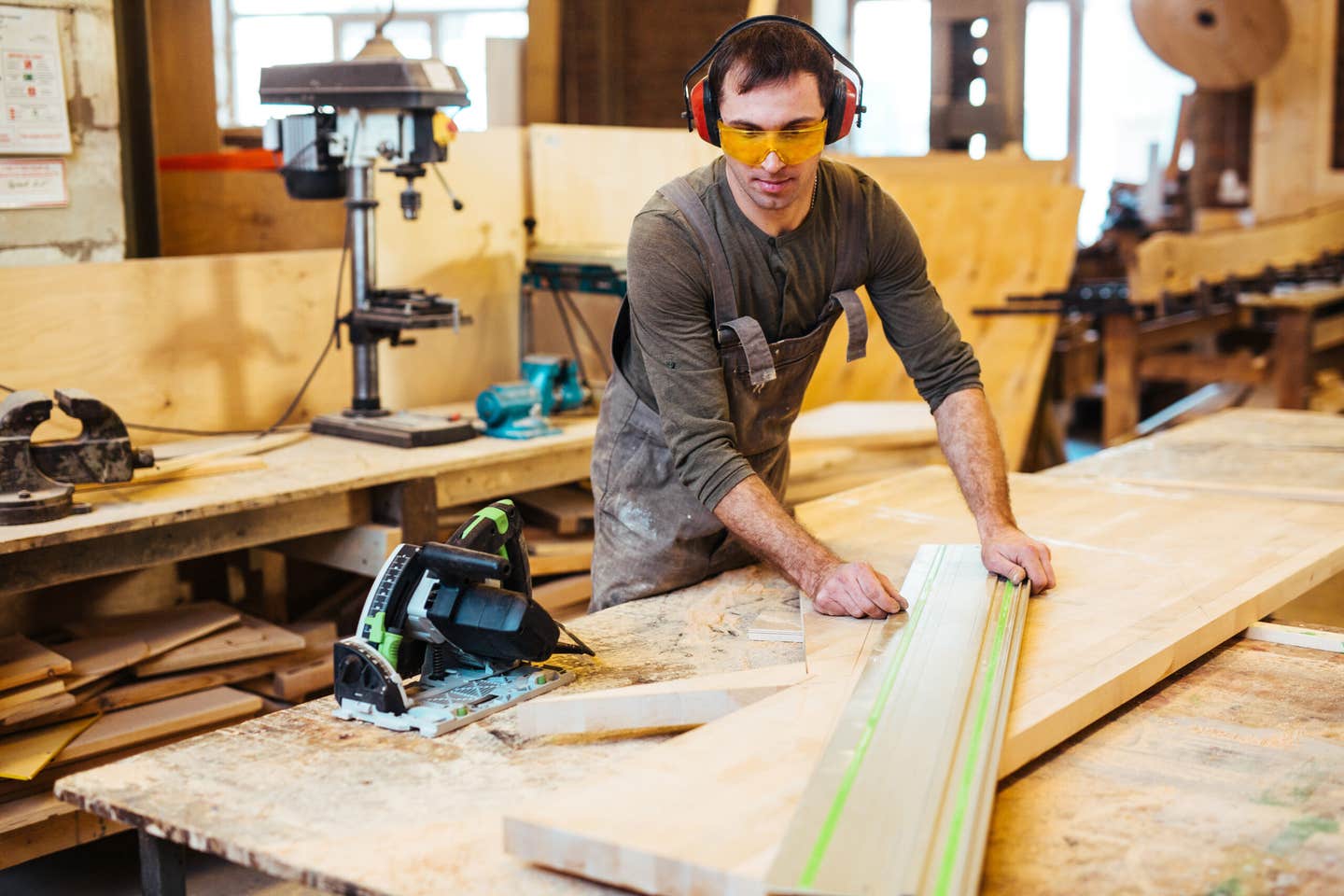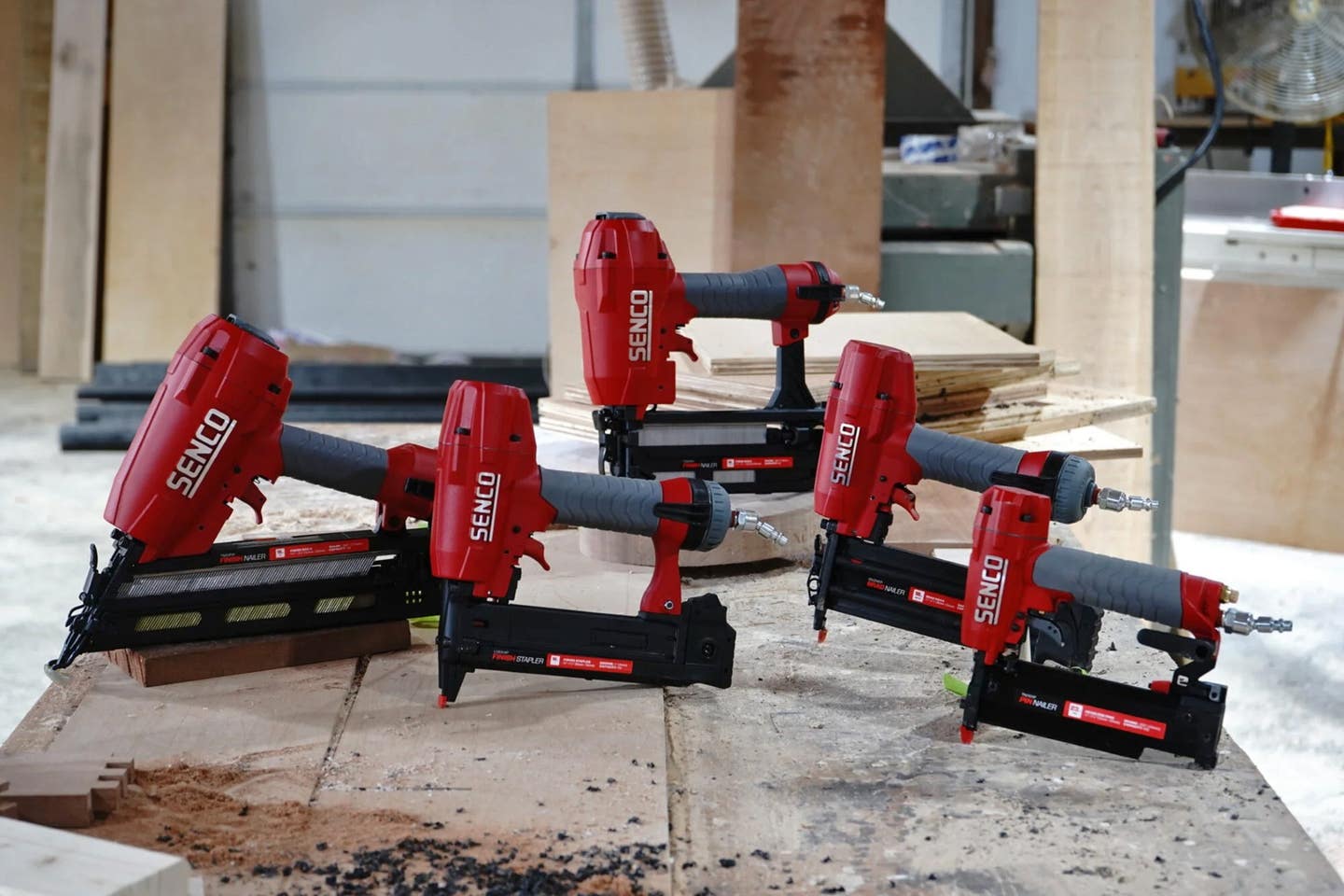Being seen to be green
A shop’s environmental standing can help the bottom line, and there are a number of ways to improve and promote the process
There may be a win-win scenario for woodshop owners when it comes to climate change. Being ‘green’ is obviously a responsible way to run a business because it creates a healthier micro-environment for employees and a healthier product for customers. Labor advocates and casework clients are increasingly aware of and demanding more environmentally sound manufacturing practices.
There are many things that a furniture or cabinet shop can do to make its environment more ecologically sound, and there’s no harm in letting the world know what’s being done. As with organically grown vegetables, responsibly made cabinets can command premium prices and seriously enhance a shop’s reputation, as long as the customers are aware of the effort being made. But how do potential clients appraise a shop’s environmental standing? Is it in a quantifiable way, such as the ubiquitous and somewhat simplistic numerical value of a carbon footprint? Or is it more systemic and less esoteric, where a broader approach appeals to and is appreciated by a wider audience? Wood is the most natural of materials, so the workshop environment should be green. But it should also be seen to be green.
Here’s how:
The broad approach
The most widely recognized standard for environmentally conscious businesses is to become carbon neutral, and more than 50 of America’s largest corporations have pledged to do so by 2040. They include giants such as Amazon, Walmart, General Motors and FedEx, so this is obviously a sound marketing strategy that the public espouses. The core meaning here is that these entities must operate entirely on renewable energy, or offset fossil fuel emissions by capturing and storing carbon dioxide. Considering the past two centuries of American corporate environmental behavior, it’s hard not to be cynical about these pledges. For example, a great deal of their optimism depends on switching to electric vehicles, but in 2020 some 60 percent of U.S. electricity was still being generated by burning fossil fuels. With holes that large in the logic, it’s quite probable that public opinion over the next two decades will question the authenticity of carbon-neutral claims and the methods used to assess a carbon footprint. That could backfire on shops trying to earn a reputation as a responsible business. Rather than chasing a very specific single indicator such as a carbon count, small- to medium-sized shops may be better served by concentrating its message on less quantifiable and more tactile environmental measures.
There are mechanisms in place today that serve that purpose. For example, shops can educate customers on its use of Forest Stewardship Council (FSC) certified wood and Environment Stewardship Program (ESP) certified cabinetry. The FSC (us.fsc.org) sets standards for responsible forest management. A voluntary program, it uses the power of the marketplace to protect forests for future generations. It is the only such system that is supported by groups such as the WWF, Sierra Club, Greenpeace, Natural Resources Defense Council, and National Wildlife Federation. More than 550 million acres of forest worldwide are certified under FSC’s system, including nearly 155 million acres in the U.S. and Canada. Using solid wood and veneer that carries FSC certification lets a shop’s owners, management, employees, suppliers, and most of all its customers know that the material is from a sustained and responsibly managed forest.
The Kitchen Cabinet Manufacturers Association created the ESP program to help manufacturers, consumers, designers, architects, and builders identify environmentally friendly products. More than 150 cabinet manufacturers already carry an ESP seal, which recognizes companies that meet strict requirements for air quality, product resource management, process resource management, environmental stewardship, and community relations. Stock, semi-custom and custom cabinetry are all available with ESP certification, and this is a quality that can be imported by smaller shops through outsourcing. Woodshops can learn more at kcma.org.
The value of being seen to be green is palpable in this era of highly informed consumerism where anybody can gain detailed access to information about the products they buy. Because of that, it’s not just custom woodshops that are chasing an environmentally friendly reputation. For example, IKEA has pledged to use only renewable and recycled materials in its products by 2030. Being aware of, and accommodating, the seismic shift toward more responsible manufacturing is going to be an increasingly important aspect of marketing over the next couple of decades. It may even be a tool that North American manufacturers can use to gain back some of the ground lost to Chinese and other overseas competitors.
Volatiles and dust
Both employees and customers value the use of responsibly sourced wood, but there are of course many other ways that a woodshop environment can be improved through sound practices and logic. Even though the world is at a customer’s fingertips, there’s no harm in pointing out to a client that buying locally means that the purchase eliminates any carbon impact that is generated by having cabinets delivered from a distant warehouse – and that’s especially true if the casework is sourced overseas.
Beyond hardwoods, a cabinetmaker’s catalog can also underscore the fact that the shop uses only VOC-free and eco-friendly finishes, or formaldehyde-free sheet stock. All of those phrases are familiar enough to the general public to elicit a positive response, but they’re not as straightforward as they sound. Changing from solvent to waterborne coatings requires a little research. Just because a coating is waterborne doesn’t mean it is necessarily VOC-free, and some water-based products include additives that may diminish the benefits derived from avoiding solvents. Changing to waterborne is a step in the right direction, but the obvious choice may not be the most impactful. For example, a shop that has been using a specific brand of solvent-based clearcoat may think the best choice is to switch to the same manufacturer’s water-based coating, but another supplier may have an eco-friendlier alternative that offers qualities such as better scratch resistance, or a shorter dry time and so on. It pays to shop around, and to educate oneself on the details.
Switching to safer sheet stock is relatively easy to accomplish, as several new core materials have become economically viable over the past few years. These include panels made with wheat or rice straw, sorghum, or even bamboo stalks. And yes, many are being manufactured in the U.S., which can sometimes circumvent the supply chain woes involved in using plywood from overseas and can certainly eliminate transportation-based carbon generation.
In the woodshop, airborne fines from naturally harvested and processed cores are probably going to be potentially less detrimental to the health of workers than fines from manmade resin-based cores. But that shouldn’t really be of consequence because today there are enough advanced technologies for collecting dust at its source on every machine that it’s relatively easy to avert a health issue.
And minor measures can add up to major benefits, even in the smallest of shops. The way that a one-man shop buys tools can have a cumulative impact over time on both the shop and the global environment. There’s that age-old adage that advises one to always buy the best tool possible, no matter how appealing a bargain may look. This is more relevant now than it ever was, as manufacturers continue to improve the quality of portable tools. Take, for example, the new generation of cordless track saws. Some of them use thinner blades that create very little sawdust, and thus very little waste.
For larger shops, a complete dust control system with individual station monitors is both a way to save a big chunk of change while simultaneously cutting the shop’s carbon footprint by reducing the demand for power. The amount of electricity that can be saved by intelligent dust control is startling. Some woodshops keep the dust collectors running through breaks and lunchtimes, and the gates are open at most machines. Moving all that air is a huge burden on the power supply. Having sensors rather than people operate gates is far more efficient because sensors don’t forget to open or close a port before and after the machine is used.
Material handling and waste
This is a subject that covers every aspect of a product’s trip through the shop – from the time it arrives on the loading dock to the day it leaves as part of a project. As such, material handling doesn’t just refer to warehousing product or feeding sheets to a CNC, although those aspects are critical.
Handling material in a woodshop environment includes several possible hazards for employees including cuts, chemical exposure such as formaldehyde emissions, catching fingers or clothing while moving parts on a hand truck or forklift, having a stack of boxes or sheet goods fall, excessive noise, lifting injuries that are a result of poorly trained techniques, and exposure to bacteria or mold in freshly sawn green lumber, to name a few. One of the fundamental changes that a manager or owner can make in the workshop environment is to create a safety committee that holds regular short meetings to address those hazards and recommend improvements. The biggest advantage to sharing this supervisory task with a committee of employers is the number of fresh eyes it brings to each workstation. Familiarity may well breed contempt, but it also breeds nonchalance. People who have worked at the same station for a long time may fail to see problems that have evolved slowly and thus have become accepted aspects of the environment. They may miss frayed cords or sharp edges, or perhaps become immune to a slight odor or a low noise that can signal a problem. And people who have been doing the same thing in the same manner over a long period of time may also become blind to the possibility of change. They may fail to see an opportunity that is quite obvious to a fresh pair of eyes, such as a faster or less wasteful way to cut parts.
A couple of industry studies from 2015 and 2017 indicate that somewhere in the region of 14 percent of all the wood that is processed by and for cabinet shops and furniture builders ends up as waste. Some of this is burned to generate heat in the shop or dry wood in a kiln, and a tiny amount is used to generate electricity. There are some other secondary uses, but the sad fact is that most of it ends up in a landfill. If there is a significant amount of manmade material in the waste stream, such as foil, adhesive or paint, the disposal costs can escalate both in terms of budget and the impact on the environment.
Rather than generating more carbon-based greenhouse emissions by hauling waste in trucks to a dumpsite, a shop can try to find creative ways to reduce it in-house. Re-use, recycling and refurbishing are some of the suggested solutions, where for example the material headed to a dumpster from a CNC router or a traditional table saw is culled more carefully for usable small pieces. Strips of solid wood can be edge-glued for panels, and oddly shaped cut-offs can be squared up or cut small enough to use as glue blocks in bases behind toe-kicks and other hidden spots where appearance doesn’t matter. Even shops without a CNC can use a simple program on a desktop computer or a phone to optimize panel cutting. And there are several ways to use sawdust such as making stove pellets in-house or shipping it to an MDF or pellet manufacturer, using it as animal bedding if it’s clean and of the right species, cleaning up spills, making mulch for weed control, or making charcoal that is mixed with certain animal wastes to create fertilizer. Whichever solution is chosen, the shop can add this to its list of responsible behaviors that let it be seen to be green.
Another simple upgrade in the woodshop is to look at the possibility of replacing old fluorescent lights with LED lamps. They are brighter, easier to focus on a task, cooler than ballasts, less expensive to run, and they last an awfully long time.
Smarter sourcing
One great way to reduce waste and improve the quality of the workday for employees is to buy just-in-time. In these days of supply chain interruptions, that’s perhaps not as easy to plan and execute, but things will eventually straighten out. Meanwhile, there may be less competition right now for greener materials than there is for what woodworkers have come to accept as ‘normal’. And some of those unfamiliar products can offer unexpected rewards such as lighter shipping weight, better absorption of stain or sealer, and of course safer handling for people on the shop floor.
For cabinet and furniture builders who are purchasing raw materials to meet ecological goals, the Building Green website (buildinggreen.com) can be a handy resource. Described by Mara Baum of HOK, a major U.S.-based architectural and interior design firm, as “one of the most reputable sources for cutting-edge green building news and product research”, the website includes a large knowledge base about material selection and codes/certifications.
One of the more familiar of those codes is Leadership in Energy and Environmental Design (LEED) certification. LEED is the most widely used green building rating system in the world, and well-informed cabinet shop clients will be familiar with its goals. Larger shop’s managers may wish to investigate the option of having one or two designers earn a LEED Green Associate professional credential, which can enhance the shop’s standing and reputation and also provide guidance in choosing and using materials. The benefits here aren’t just about gratification and making customers feel better about their global footprint. There are real upsides to responsible sourcing. In today’s tightly sealed homes for example, it’s essential to use products that have no detrimental emissions over time. Learning which materials meet such criteria and passing that along to homebuilders and buyers can be one more way that a shop can be seen to be green.
A woodshop owner who wants to be seen in this way can comb through all the topics mentioned above, note the ways that the business cares for both the larger environment and the smaller one within its own walls, and then use that list to create a paper trifold that can be handed to potential clients. Or better still, they can build a paperless and more environmentally friendly web page to which customers can be directed to learn in detail about the shop’s environmentally responsible practices.
This article was originally published in the December 2021 issue.







